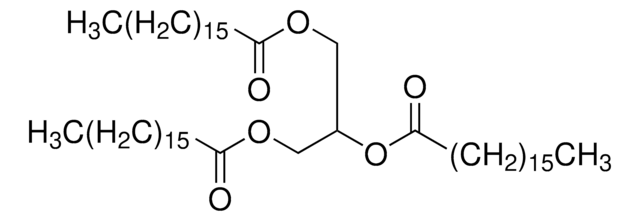S6389
1-Stearoyl-2-arachidonoyl-sn-glycerol
~98%, suitable for stimulation of protein kinase C derived from liver cells, liquid
Synonym(s):
1-Octadecanoyl-2-([cis,cis,cis,cis]-5,8,11,14-eicosatetraenoyl)-sn-glycerol, 2-Arachidonoyl-1-stearoyl-sn-glycerol
About This Item
Recommended Products
Assay
~98%
form
liquid
impurities
1,3-isomer, trace
solubility
chloroform: 20 mg/ml
suitability
suitable for stimulation of protein kinase C derived from liver cells
shipped in
dry ice
storage temp.
−20°C
SMILES string
CCCCCCCCCCCCCCCCCC(=O)OCC(CO)OC(=O)CCC\C=C/C\C=C/C\C=C/C\C=C/CCCCC
InChI
1S/C41H72O5/c1-3-5-7-9-11-13-15-17-19-20-22-24-26-28-30-32-34-36-41(44)46-39(37-42)38-45-40(43)35-33-31-29-27-25-23-21-18-16-14-12-10-8-6-4-2/h11,13,17,19,22,24,28,30,39,42H,3-10,12,14-16,18,20-21,23,25-27,29,31-38H2,1-2H3/b13-11-,19-17-,24-22-,30-28-
InChI key
NSXLMTYRMFVYNT-LGHBDAFPSA-N
Looking for similar products? Visit Product Comparison Guide
Application
Biochem/physiol Actions
Packaging
Caution
Storage Class Code
10 - Combustible liquids
WGK
WGK 3
Flash Point(F)
Not applicable
Flash Point(C)
Not applicable
Personal Protective Equipment
Choose from one of the most recent versions:
Already Own This Product?
Find documentation for the products that you have recently purchased in the Document Library.
Customers Also Viewed
Our team of scientists has experience in all areas of research including Life Science, Material Science, Chemical Synthesis, Chromatography, Analytical and many others.
Contact Technical Service














